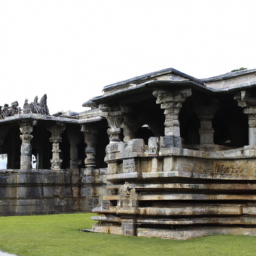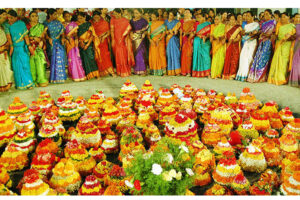History Of Warangal

Hey there! Have you ever wondered about the fascinating history of Warangal? Well, in this article, we’ll dive deep into the ancient past of this incredible city in Telangana, India. From its reign as the capital of the Kakatiya dynasty to its glorious architecture and cultural heritage, Warangal has a rich history that will surely captivate your attention. So, get ready to discover the secrets and stories that have shaped this extraordinary place over the centuries!
Curious to know more? In this article, we’ll take you on a journey through time, exploring the rise and fall of the mighty Kakatiya dynasty and their remarkable contributions to art, architecture, and governance. We’ll also delve into the iconic landmarks of Warangal, such as the majestic Thousand Pillar Temple and the massive stone fortifications that have withstood the test of time. So, if you’re eager to learn about the captivating history of Warangal and its influence on the region, keep reading!
The History Of Warangal
Warangal, located in the southern state of Telangana in India, has a long and illustrious history that stretches back to ancient times. From the prehistoric era to its glorious reign as the capital of the Kakatiya Dynasty, the city has witnessed the rise and fall of powerful empires and has left behind a rich cultural heritage. Let’s take a journey through the different periods of Warangal’s history and explore the fascinating stories that shaped the city.
Ancient Period
Prehistoric Warangal
Before the emergence of any known civilization, Warangal was inhabited by prehistoric tribes who left behind traces of their presence in the form of megalithic dolmens and rock art. These ancient relics are a testament to the early human settlements that existed in the region.
Glorious Kakatiya Rule
The Kakatiya Dynasty, one of the most powerful and influential dynasties in South India, reigned over Warangal during the 12th and 13th centuries. The dynasty saw its rise under the leadership of Rudradeva, the first Kakatiya ruler, who established his capital in Warangal. It was during the rule of the Kakatiya kings that Warangal reached its zenith as a center of power, culture, and trade.
Kakatiya Dynasty
Rise of the Kakatiya Dynasty
The rise of the Kakatiya Dynasty marked a significant shift in the political landscape of South India. The Kakatiya rulers successfully resisted the onslaught of the Chola Empire and emerged as a prominent force in the Deccan region. With their military prowess and strategic alliances, the Kakatiya rulers extended their kingdom and consolidated their power over a vast territory.
Warangal Fort and the Great King Ganapatideva
One of the most iconic symbols of Warangal’s history is the Warangal Fort, built during the reign of King Ganapatideva. Known for its impressive architecture and imposing structure, the fort served as the center of administration and defense of the Kakatiya kingdom. The Kakatiya kings adorned the fort with intricate carvings and sculptures, showcasing their patronage of art and culture.
Art and Architecture
Iconic Thousand Pillar Temple
Among the many architectural marvels of Warangal, the Thousand Pillar Temple stands out as a testament to the grandeur and skill of the Kakatiya artisans. This temple, dedicated to Lord Shiva, is renowned for its intricately carved pillars, each showcasing unique designs and sculptures. The Thousand Pillar Temple is a UNESCO World Heritage site and attracts visitors from around the world.
Elegance of Kakatiya Sculptures
The Kakatiya period witnessed an artistic renaissance, with the creation of exquisite sculptures that adorned temples and monuments. These sculptures, characterized by their intricate detailing and lifelike representations, showcased the artistic finesse of the Kakatiya artisans. Today, these sculptures can be found in museums, providing a glimpse into the glorious past of Warangal.
Medieval Era
Delhi Sultanate’s Control over Warangal
In the late 13th century, Warangal fell under the control of the Delhi Sultanate, marking a significant shift in political power. The Sultanate sought to subdue the resilient Kakatiya rulers and establish their authority over the region. However, the people of Warangal continued to resist and maintain their cultural identity, despite the changing political landscape.
Bahmani Rule and Devagiri War
With the decline of the Delhi Sultanate, the Bahmani Sultanate rose to prominence in the Deccan region. Warangal became a battleground during the Devagiri War, where the Bahmani Sultanate fought against the Vijayanagara Empire for control over the region. The city witnessed several conflicts and power struggles during this period, leading to a transient rule over Warangal.
Qutb Shahi Dynasty
Qutb Shahi Kings and Warangal Trade
After the fall of the Bahmani Sultanate, the Qutb Shahi dynasty established their rule over Warangal. The Qutb Shahi kings recognized the strategic importance of Warangal and utilized its location to strengthen trade relations with European powers. The city flourished as a hub of commerce and witnessed significant economic growth during the Qutb Shahi period.
Notable Structures from Qutb Shahi Period
The Qutb Shahi rulers made substantial contributions to Warangal’s architectural landscape. The Khush Mahal, the Bhadrakali Temple, and the Katora House are some of the notable structures from this period. These architectural marvels exemplify the fusion of indigenous and Islamic architectural styles.
Mughal Influence
Fall of Qutb Shahis
The decline of the Qutb Shahi dynasty marked the end of an era in Warangal’s history. The Mughal Empire, under the leadership of Aurangzeb, conquered Warangal and established their supremacy over the region. With the fall of the Qutb Shahis, Warangal’s fortunes took a downturn, and the city witnessed a period of political instability and economic decline.
Warangal under Mughal Rule
Under Mughal rule, Warangal lost its prominence as a political and economic center. However, the Mughal influence can still be seen in the architecture and design of certain structures, such as the Charminar. The city became a part of the Mughal Empire’s larger administration and underwent a process of assimilation into the Mughal culture.
Nizam’s Rule
Hyderabad State’s Annexation
In the 18th century, Warangal came under the control of the Nizam of Hyderabad, a vassal of the Mughal Empire. The Nizams ruled over Warangal for several centuries, and the city became a part of the larger Hyderabad State. During this period, Warangal experienced stability and witnessed several socio-economic developments under the Nizam’s administration.
Socio-economic Developments in Warangal
The Nizam’s rule brought about significant changes in the social and economic fabric of Warangal. The construction of irrigation projects, such as the Ramappa Temple tank and the Pakhal Lake reservoir, fueled agricultural growth and improved the lives of the people. The Nizams also promoted education and established institutions that contributed to the intellectual and cultural development of Warangal.
Freedom Struggle
Warangal’s Contribution to the Freedom Movement
Warangal played a crucial role in the Indian freedom struggle against British colonial rule. The city witnessed several key events, such as the Non-Cooperation Movement and the Quit India Movement, which saw widespread participation from the people of Warangal. Many freedom fighters from Warangal sacrificed their lives in the pursuit of independence.
Participation in Civil Disobedience Movements
Warangal actively participated in various civil disobedience movements, including protests against the oppressive policies of the British Raj. The people of Warangal demonstrated their resilience and determination to achieve freedom through peaceful means. The heroic stories of these brave individuals continue to inspire generations and remind us of the sacrifices made for the nation’s independence.
Post-Independence Era
Formation of Andhra Pradesh
Following India’s independence in 1947, Warangal became a part of the newly formed state of Andhra Pradesh. The city underwent urbanization and witnessed rapid development in various sectors, including infrastructure, education, and industry. Warangal emerged as an important educational and industrial hub in the state.
Modern Developments and Urbanization
In recent years, Warangal has witnessed significant urbanization and modern developments. Infrastructure projects, such as the construction of highways and the establishment of information technology parks, have transformed the city’s landscape. Warangal continues to grow and evolve, while still preserving its rich cultural heritage.
Conclusion
Revering Warangal’s Rich History
Warangal’s history is a testament to the resilience and glory of its people. From the magnificent structures of the Kakatiya Dynasty to the struggles for independence, the city has witnessed the ebb and flow of power and the indomitable spirit of its inhabitants. The stories and cultural heritage of Warangal deserve to be cherished and celebrated.
Preserving and Celebrating Cultural Heritage
It is crucial to preserve the architectural marvels, sculptures, and artifacts from Warangal’s rich history. Efforts must be made to protect and restore these monuments to ensure that future generations can appreciate their magnificence. Additionally, cultural festivals and events should be held to promote and showcase the unique traditions and customs of Warangal, preserving its rich cultural heritage for years to come.
Warangal’s history is a treasure trove of stories that deserve to be explored and cherished. As you navigate the streets of this ancient city, take a moment to admire the architectural marvels, visit the museums that house the remnants of its glorious past, and immerse yourself in the cultural festivities that celebrate the heritage of Warangal.





